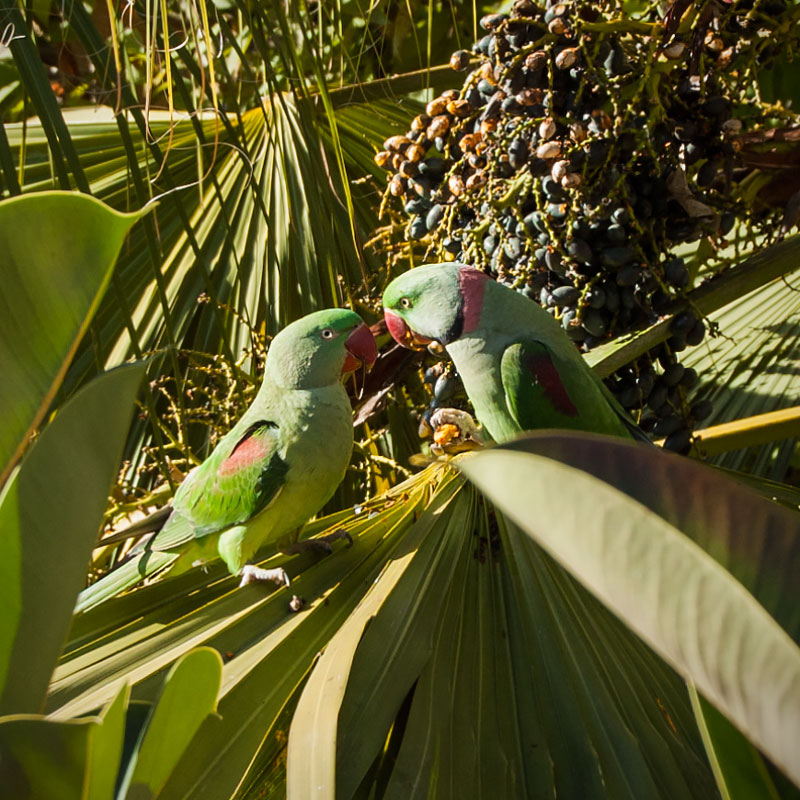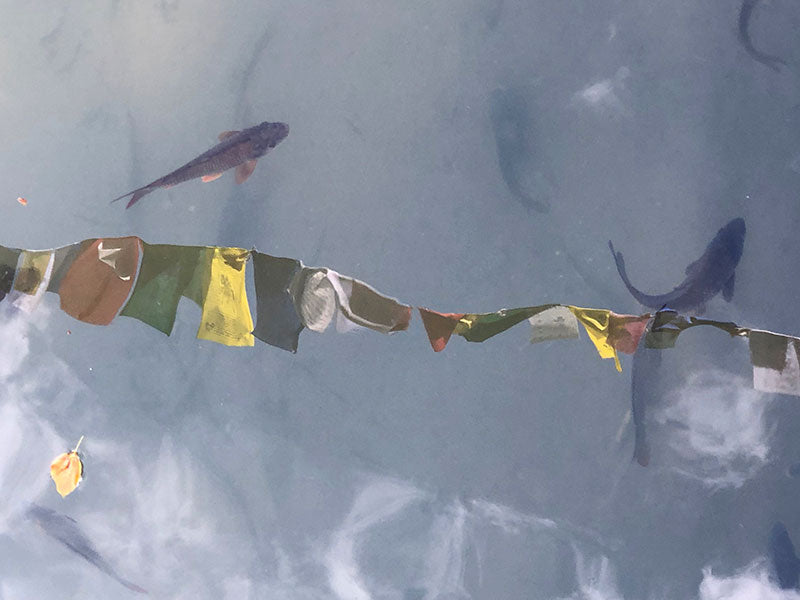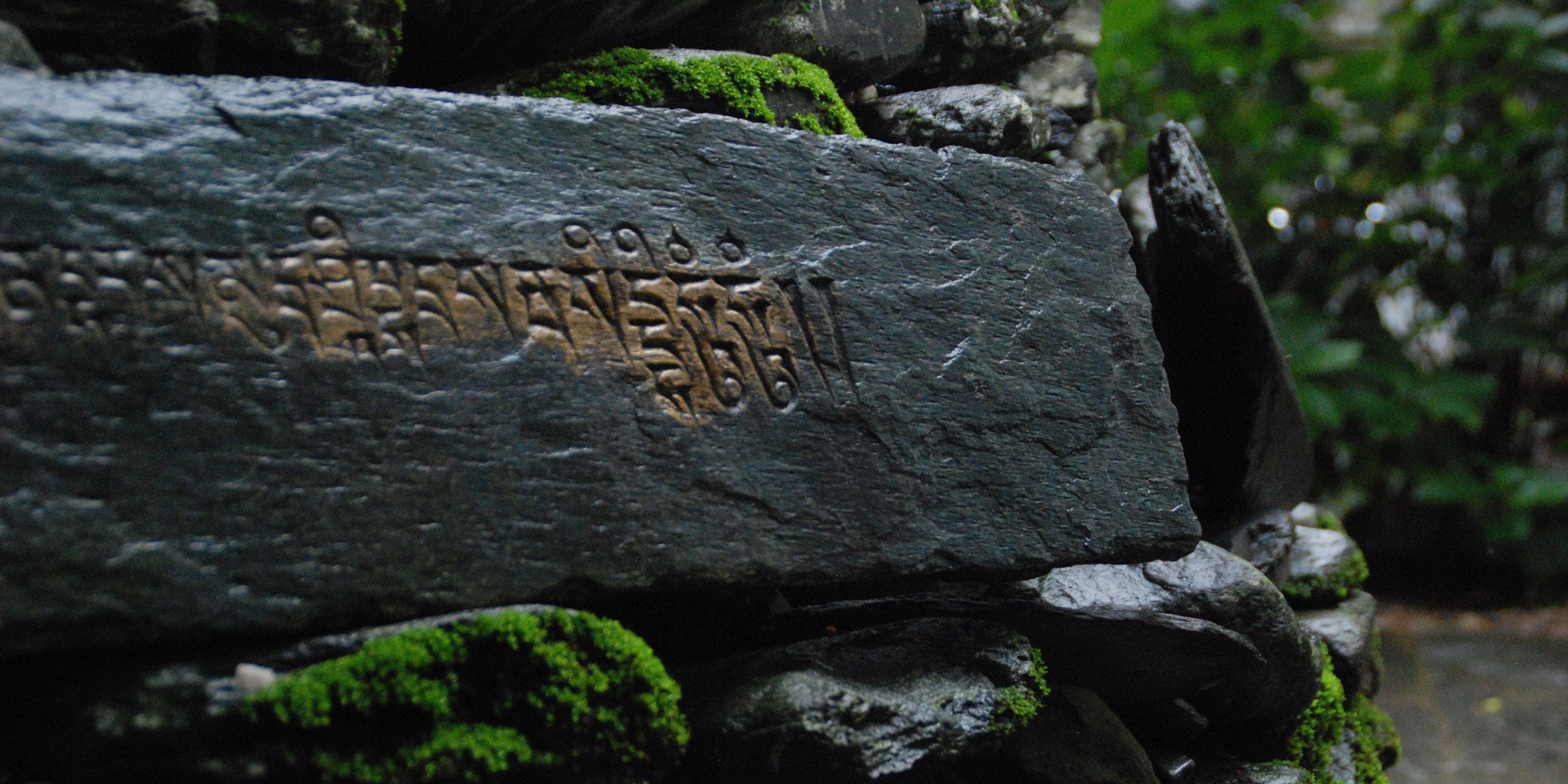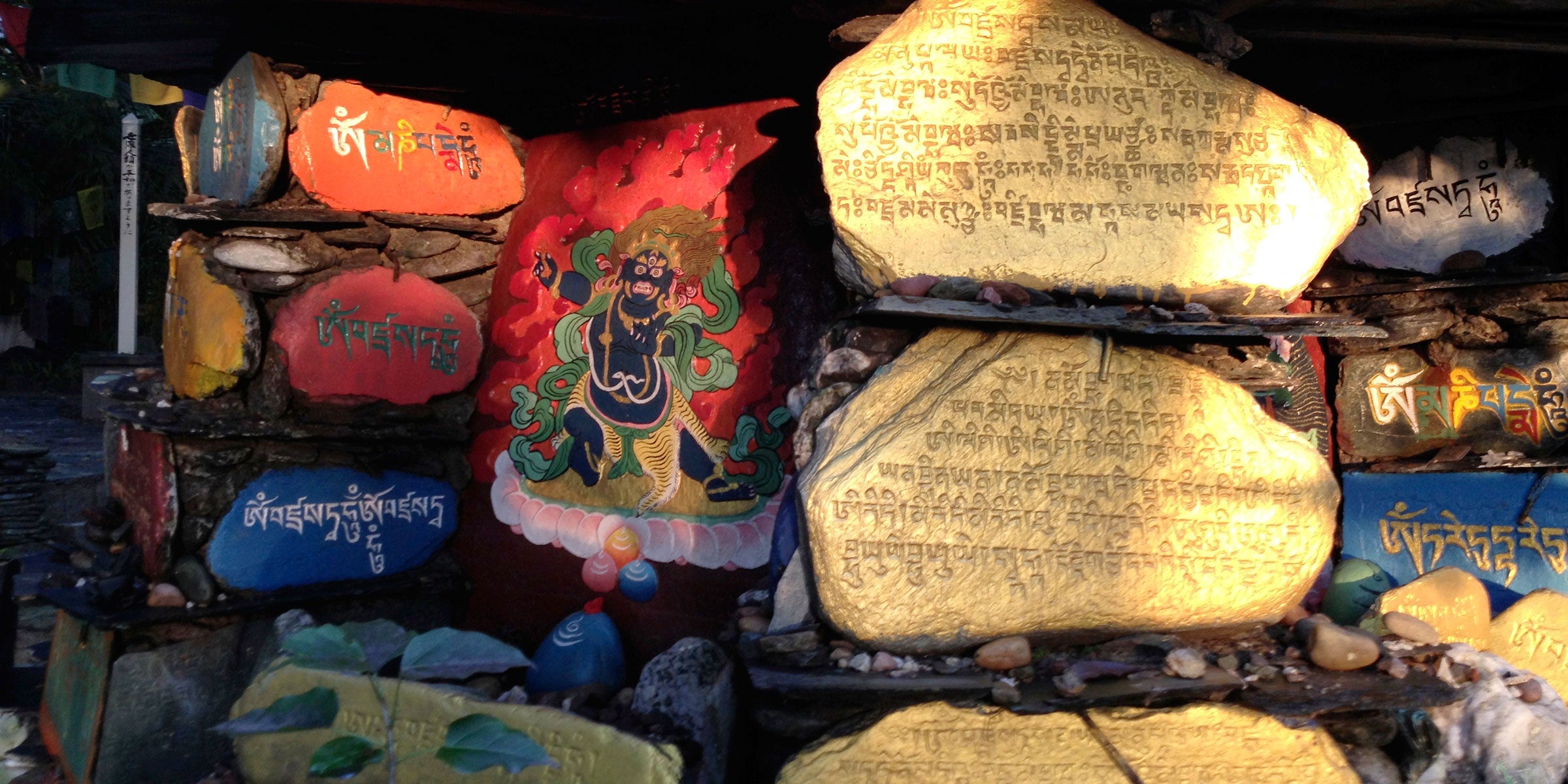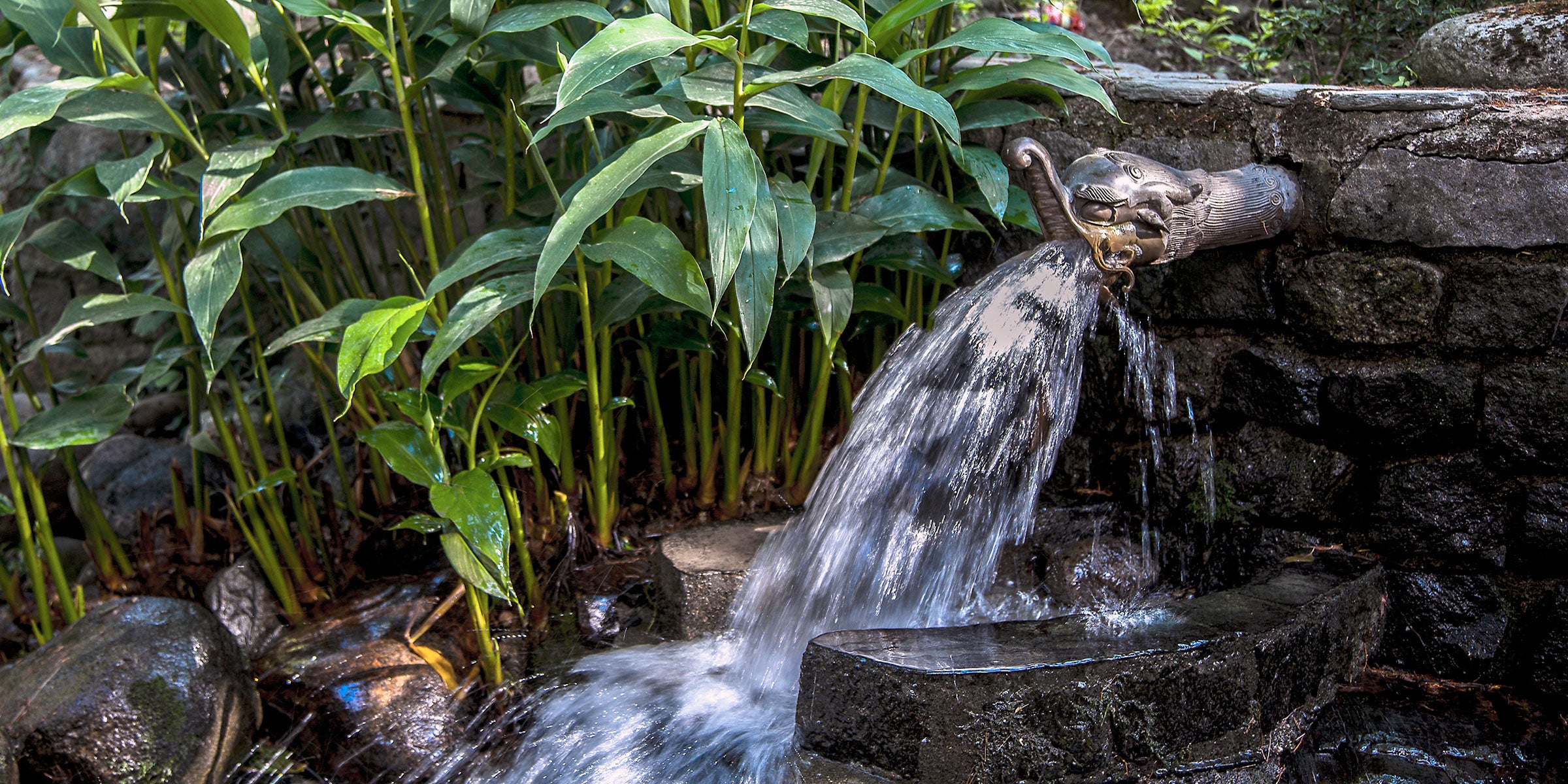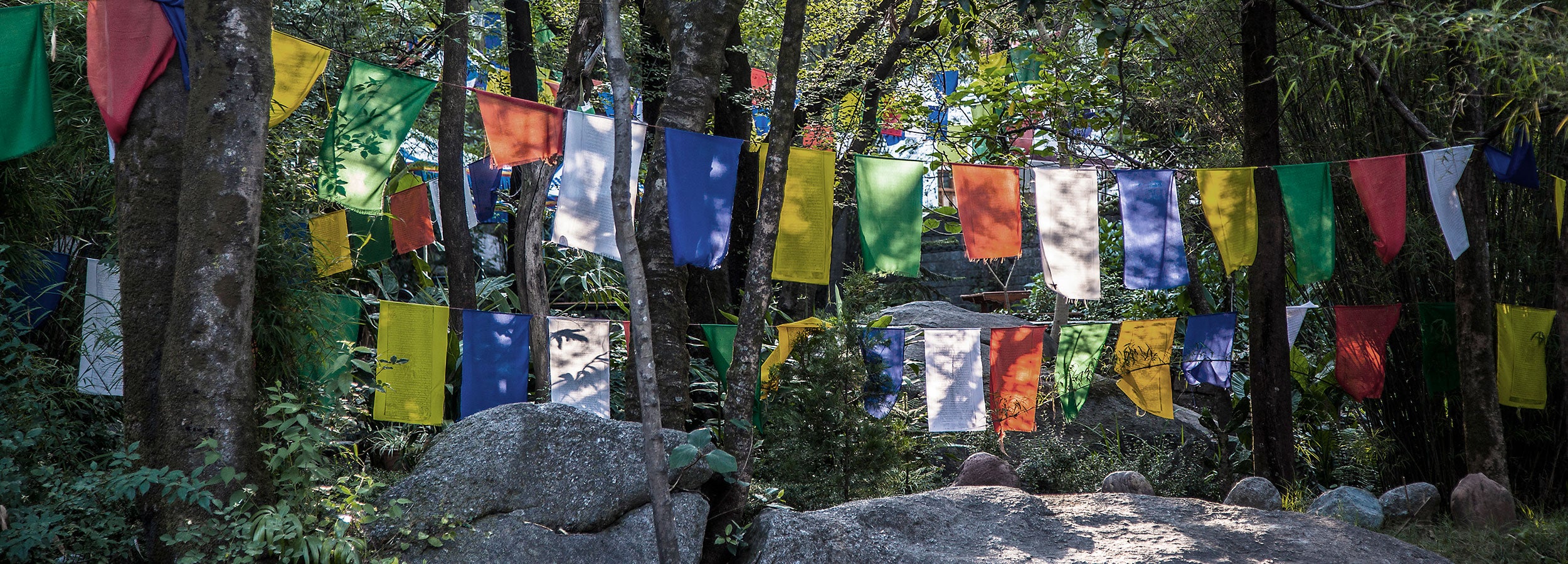Grounds & Gardens
The name Norbulingka was derived from Jewel Park in Tibet. In Lhasa, the Norbulingka was the summer palace of the Dalai Lamas, with the 7th Dalai Lama building the first pavilion in the 18th century. Its wooded grounds are still a favorite picnic spot for the Lhasa population, with whole families gathering to watch outdoor performances of the traditional Lhamo Opera. It was also a center for the arts under the 7th and 13th Dalai Lamas.
In the Himalayan foothills, in full view of the snow peaks of the Dauladhar range, the Norbulingka founders have recreated a haven for artists in the traditional Tibetan arts. Set among streams and rice paddies, the Norbulingka gardens, which follow the area's natural landscape, are lush and cool, built around multiple trees, boulders and ponds and crisscrossed with streams. Rich in native plants, they are teeming with bird life.
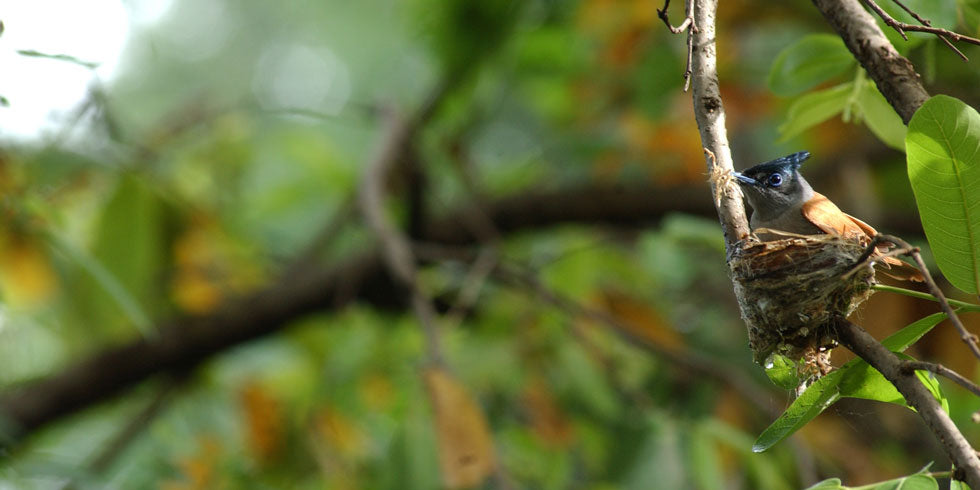
Birds & Fish of Norbulingka
Norbulingka’s lush gardens teem with bird life. Originally terraced fields that grew wheat in winter and rice in summer, they were bordered with an abundance of mature trees. Several landscapists worked on the gardens, enhancing its natural layout and assets, streams and boulders, with local plants that flourish and multiply in the lush tropical climate of the area. They created rock gardens around cascading streams, several ponds, one filled with carp, and planted bamboo. The Norbulingka gardens became a haven for birds, a place undisturbed by the harvesting of leaves and branches common in the area, where they could build their nests undisturbed.
Among our most frequent visitors, many of whom have inspired the designs on our wooden products, are green and rose necked parrots both common in the hills around Dharamsala are native to the Indian subcontinent. Another, is the Paradise Flycatcher, the male with its endless white plumaged tail that waves behind it as it flies. The female, black and orange in color may as well be from another species, so different she is from her partner. They are said to be life mates.
Birds love the lush Norbulingka gardens and both species can be spotted most of the year, in summer blending with the foliage and feeding on wild figs and crab apples, and in winter, on the sour cherries that follow the November blooms of the wild cherry trees. Parrots find readymade nests in the cavities of trees, where they leave tell-tale signs of their presence with tiny green feathers caught up in the tree bark. Paradise fly catchers build neat little nests in the high branches of trees, some in such number that they were nicknamed bird condominiums.
The large pond is filled with carp, both grey and orange, some blending the two shades. They grow to be quite large and disappear at the bottom in winter.
This rich and colourful life in the Norbulingka gardens has inspired our artisans to create hand painted wooden boxes and cushion covers.

